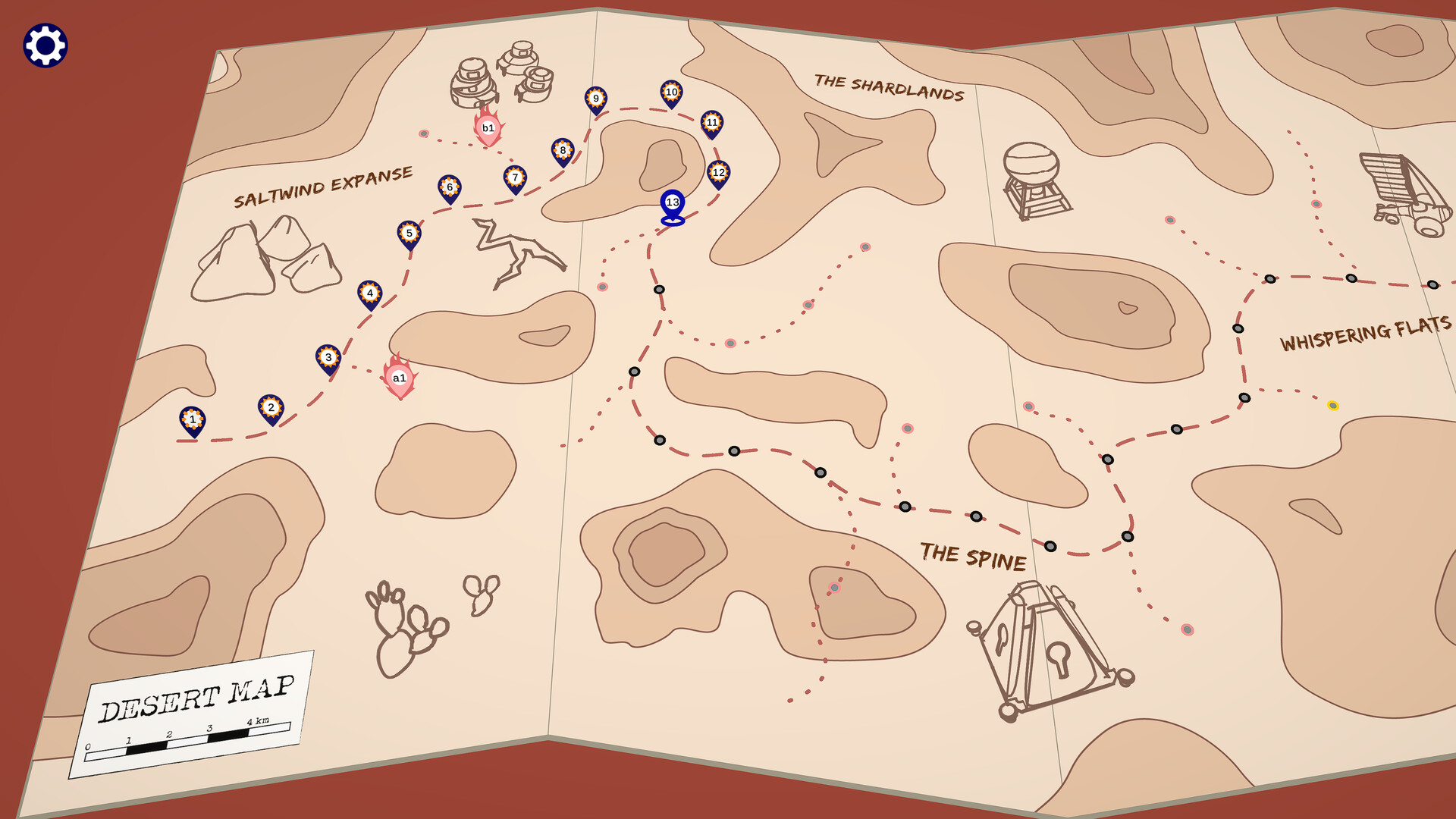Devlog
Lets talk about difficulty design in puzzle games
One notoriously difficult task when it comes to designing puzzle games is how to balance difficulty. The reason for this, as is so often the case with design tasks, is that it isn’t a matter of finding the correct solution, but to achieve a fine balance of factors. Make the difficulty too hard and the ramp too steap and many players will drop of before they even get to the interesting parts of the game, make it too shallow and it can feel tedious and boring (or you’ll have to find other motivating factors, like making really smooth and satisfying level solved animations).
In this devlog we will try to explore how our approach changed between our last two puzzle games Chronescher and TRAILS and what we have hopefully learned and improved upon.
Learnings from Chronescher
With our last puzzle game we set out to create a game that used fun mind bending mechanics such as escher style perspective shifts, portals and level state resetting snapshots, and really push them to their limits in order to see what complex interactions they could create.
While we managed to do that, we might have gotten carried away a bit when it comes to the complexity in some of the later levels (after hundreds of hours designing, testing and tweaking levels you kind of lose touch with the experience of a player who has just started to play the game).
Only about 20% of steam players managed to reach Biom 4.
We were aware that some of the levels were getting quite difficult (some of them taking us multiple attempts and several hours on our first solves) and tried to accommodate this by placing them on optional branches. While this worked somewhat well, an internal evaluation of the difficulty curve of chronscher a good year after its launch still revealed multiple problems:
- there were a few instances where levels represented too big of a jump in difficulty, leading some players to give up in frustration
- some mechanics weren’t taught as well as we would have liked, leading to players aimlessly attempting levels in a trial and error fashion, because they didnt have the knowledge required to figure out the solution
- optional levels were not sufficiantly marked as optional (and potentially much more difficult), leading people to get stuck in them early on
- intended to provide a first exploratory stage to many levels, some players disliked that there was no consistent and clear indication what effect a button would have without actually reaching and activating it
On to Trails
With TRAILS our aim was to learn from the things that didn’t work as well in Chronescher.
This meant that we were much more conscious of the ramp in difficulty and tried to achieve as smooth of a learning curve as possible. We also added some additional simple levels after the introductory levels of each mechanic that would reinforce what players had learned and give them an additional opportunity to observe how things worked and interacted with other systems.
Players will only return to the map if they reach a dead end or navigate there themselves.
We also decided not to throw players back onto the main map every time they unlocked a sidepath. This way players were more likely to progress along the main path for their first few sesssions and would likely only attempt the optional challenges when they had settled into the game and were familiar with its core functionality.
We also made the hardest levels even more inaccessible, by gating them behind a late game mechanic that players would only encounter in the second half of the game and only if they played optional levels to begin with. While this setup is a bit convoluted, it grants us much finer control over what difficulty players will encounter at what point of their playthrough, while also adding some excitement and sense of progression to the late game.
Players need to solve levels with the coin mechanic in order to collect up to 7 coins, that will in turn unlock the three levels of the midnight biome.Coin Levels are all optional levels and hidden until the Coin tutorial (level j1) has been beaten.
Where to next?
In spite of rigorous testing it will take some time after the release of TRAILS for us to be able to properly gauge how well our approach to difficulty in TRAILS ended up turning out. And there will almost certainly be more to improve when we set out next time to make a puzzle game that is both easily picked up and approachable and that also takes its mechanics to the limit, providing challenges for even the most seasoned puzzlers out there.
 Purple Sloth Studio
Purple Sloth Studio


